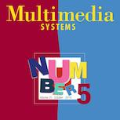Introduction: Multiple Sclerosis (MS) is a chronic disease that affects millions of people across the globe. MS can critically affect different organs of the central nervous system such as the eyes, the spinal cord, and the brain. Background: To help physicians in diagnosing MS lesions, computer-aided methods are widely used. In this regard, a considerable research has been carried out in the area of automatic detection and segmentation of MS lesions in magnetic resonance images (MRIs). Methodology: In this study, we review the different approaches that have been used in computer-aided detection and segmentation of MS lesions. Our review resulted in categorizing MS lesion segmentation approaches into six broad categories: data-driven, statistical, supervised machine learning, unsupervised machine learning, fuzzy, and deep learning-based techniques. We critically analyze the different techniques under these approaches and highlight their strengths and weaknesses. Results: From the study, we observe that a considerable amount of work, around 25% of related literature, is focused on statistical-based MS lesion segmentation techniques, followed by 21.15% for data-driven based methods, 19.23% for deep learning and 15.38% for supervised methods. Implication: The study points out the challenges/gaps to be addressed in future research. The study shows the work which has been done in last one decade in detection and segmentation of MS lesions. The results show that, in recent years, deep learning methods are outperforming all the others methods.
翻译:多发性硬化(MS)是一种影响全球数百万人的慢性疾病。MS(MS)是一种影响全球数百万人的慢性病。MS(MS)可以对中枢神经系统的不同器官,例如眼睛、脊髓和大脑产生严重影响。背景:为了帮助医生诊断MS损伤,广泛使用计算机辅助方法。在这方面,已经在磁共振图像中自动检测和分解MS损伤(MIS)领域进行了大量研究。方法:在本研究中,我们审查了在计算机辅助检测和对MS损伤进行分解时所使用的不同方法。我们的审查的结果是将MS(MS)损伤分解方法分为六大类:数据驱动、统计、监督机器学习、不受监督的机器学习、模糊和深层学习技术。我们对这些方法下的不同技术进行了批判性分析,并突出了这些方法的长处和弱点。结果:我们从研究中发现,大量工作(约25%的相关文献)侧重于基于统计的MS(MS)分解技术。我们的研究结果分为21.15%,数据分解法分为以下六大类:数据驱动、统计分解、统计、统计分解方法中有19.3%用于深层学习的最近研究方法。最近十年的周期研究方法显示了15个方法。




